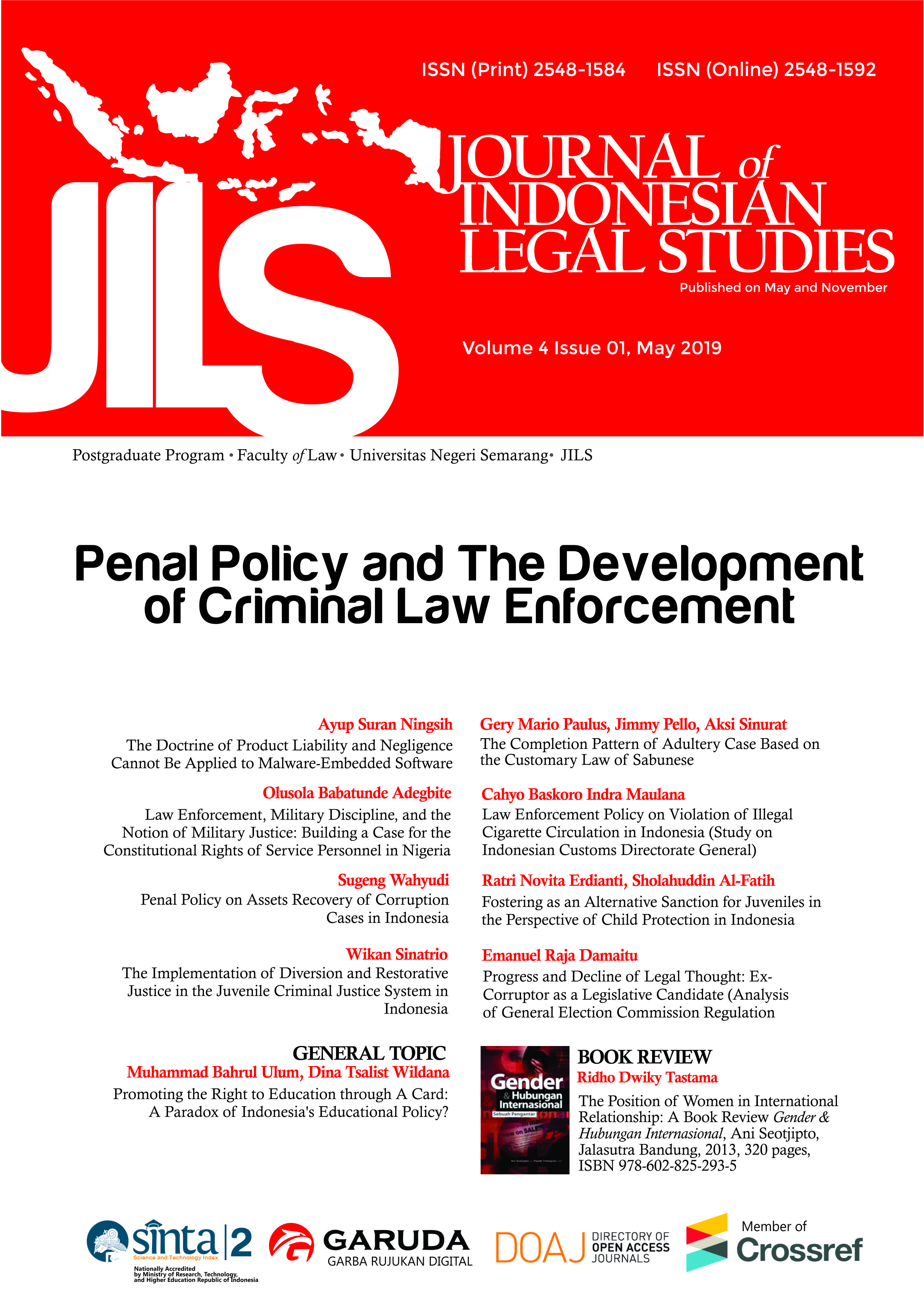The Doctrine of Product Liability and Negligence Cannot Be Applied to Malware-Embedded Software
Main Article Content
Abstract
Today, the development of technology is remarkable; the world has faced the industrial era 4.0 where people are now more popular to carry out various financial transactions, both the process of buying and selling and other financial transactions through digital transactions. This digital transaction is run by an information system and is provided with special software that runs it. Damage to computer devices and software can cause all kinds of damage. This damage can cause someone to experience damage or loss due to damaged hardware or software, one or more of the following legal areas can provide recovery; such as contract law; technology law; consumer protection; and product liability. This article is to examine the doctrine of product liability and negligence cannot be applied to malware-embedded software. The approach of the research method used in this article is normative juridical. The normative juridical approach is an approach carried out based on the main legal material by examining theories, concepts, legal principles and laws and regulations related to this research.
Article Details

This work is licensed under a Creative Commons Attribution-ShareAlike 4.0 International License.
All writings published in this journal are personal views of the authors and do not represent the views of this journal and the author's affiliated institutions. Author(s) retain copyrights under the licence of Creative Commons Attribution-ShareAlike 4.0 International (CC BY-SA 4.0).
References
Bainbridge, David. Introduction to Information Technology Law Sixth Edition. United Kingdom: Pearson Longman, 2008.
Galasso, Alberto & Luo, Hong. “How Does Product Liability Risk Affect Innovation? Evidence from Medical Implants.†CEPR Discussion Paper No. DP13036, 2018.
Hermana, Budi & Silfianti, Widya. “Evaluating E-government Implementation by Local Government: Digital Divide in Internet Based Public Services in Indonesiaâ€, International Journal of Business and Social Science, 2011, 2 (3):156-161.
Irianto, Sulistyowati & Shidarta. Metode Penelitian Hukum Konstelasi dan Refleksi, Jakarta: Yayasan Pustaka Obor Indonesia, 2011.
Juan José Ganuza, Fernando Gomez, Marta Robles. “Product Liability versus Reputationâ€, The Journal of Law, Economics, and Organization, 32 (2), 2016: 213–241.
Lloyd, Ian J. Information Technology Law. New York: Oxford University Press, 2011.
Miyaki, Patrick T. “Computer Software Defects: Should Computer Software Manufacturers be Held Strictly Liable for Computer Defect?â€, Computer and High Technology Law Journal , 1992, 8 (1): 121-144.
Rowland, Diane. Liability for Defective Software. London: The Cambrian Law Review, 1991, 78 (22): 73-92.
Rowland, Diane & Macdonald, Elizabeth. Information Technology Law Third Edition, Australia: Cavendish Publishing, 2005.
Setiadi, Farisya, Sucahyo, Yudho Giri and Hasibuan, Zainal A. “An Overview of the Development Indonesia National Cyber Securityâ€, International Journal of Information Technology & Computer Science, 2012, 6 (1): 106-114.
Sunghyo, Kim. “Crashed Software: Assessing Product Liability for Software Defects in Automated Vehicles.†Duke Law & Technology Review, 2018, 16 (1): 300-317.
Zawiyah M. Yusof, et.al. Teknologi Maklumat dan Alam Siber: Isu Etika dan Undang-undang (Information Technology and Cyber World: Ethical and Legal Issues). Kuala Lumpur: Pearson Education, 2016.
